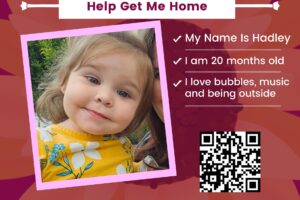 Usually, parents have many wishes for their children, but what is the best you could desire for your child? No, not being an excellent student, not owning a great deal of money, not traveling the world, or getting married. It is simple but tricky. Feeling HAPPY or obtaining happiness is the most precious wish for your child or for that matter any human being.
Usually, parents have many wishes for their children, but what is the best you could desire for your child? No, not being an excellent student, not owning a great deal of money, not traveling the world, or getting married. It is simple but tricky. Feeling HAPPY or obtaining happiness is the most precious wish for your child or for that matter any human being.
How can you help your child achieve happiness? Happiness is a single word that entails many elements including joy, gratification, engagement, accomplishment, well-being, self-esteem, friendliness and more. A good way to accomplish this is to look for support in developing the four areas that make a person happy which are detailed in the Whole Child Approach.
Educating the “whole child” is a tried and true approach that has been used for centuries. When this approach is applied consistently it can give excellent results. The pillars of the whole child approach are the emotional self, the social self, the physical self, and the cognitive self. Educating the whole child is a beautiful process that should be led by parents and their support teams which include but are not limited to educators, psychologists, therapists, nutritionists and more. Finding the right balance amongst these pillars is the base for a happy childhood that promotes a happy life. I will leave the physical self to the medical doctors and physical education teachers.
A healthy emotional self, the awareness of our feelings and feelings in others, will successfully establish healthy relationships with others. Children who learn to control their emotional reactions at a young age are better equipped to face difficult situations and successfully deal with challenges at school, college, or work. Children who regulate their emotions tend to focus, concentrate, think about their thinking, and problem-solve effectively. When children identify their feelings and emotions, they can put themselves in someone else’s shoes, becoming empathetic. Peers look for and enjoy being with them because they feel understood. These types of children or young adults are popular amongst friends and family members, boosting their emotional self.
These are some of the strategies that children will need to learn:
- Label your feeling (angry, sad, worried)
- Label your physical sensation (hot face, hand shaking, sweating)
- Use a coping strategy (breath, drink water, walking)
- Practice emotional regulation (identifying the exact moment when a coping strategy is needed)
Below is what you can provide your child to develop a happy and healthy emotional life:
- Time to play
- Provide a stable and loving home environment
- Attend a school that offers well-being interventions
- Participation in community activities
- Exposure to many kinds of opportunities and cultures
- Ensuring that they have control over their choices in life
- Teaching resilience to overcome difficulties
One of the most beautiful but tough experiences in my life has been to see my son leave for college. As a mother I felt confidence and reassurance knowing I helped provide my son with a base for a healthy and emotional self.
Eliana Fernandez is the founder and owner of Lazos Educational Services. You can reach her at 914-406-0648 or elifer.1217@gmail.com.







